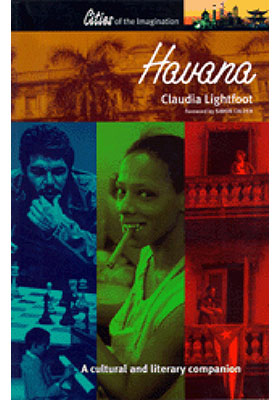Havana
A Cultural and Literary Companion
(哈瓦那:文化和文學導覽)
ISBN : 978-190-2669-33-5
Cities of the Imagination Other Distributed Titles
November 2002
288 pages, 5.25″ x 8″
For sale in Hong Kong SAR and Macao SAR only
- HK$175.00
From its humble birth as a few thatched huts along the shoreline, Havana has emerged from five hundred years of turbulent history as the most fascinating city in the Caribbean. Spain’s “Pearl of the Antilles” was in turn plundered by pirates, invaded by foreign fleets and then turned into a Mafia-run playground under US tutelage. Since 1959 the seat of Fidel Castro’s revolutionary regime, Havana is now shaking off forty years of blockade to face the new challenges of mass tourism. A city whose fabric has always been threatened by hurricanes and political upheaval, Havana has developed a wild edge, an energy and an alluring exoticism that have intrigued and enchanted visitors as diverse as Alexander von Humboldt, Anais Nin, Lorca and Sartre.
Claudia Lightfoot explores Havana’s history and its paradoxes: a city where architectural treasures survive among crumbling tenements; where a vibrant street life takes place amid shortages; where revolutionary politics, machismo and a thriving black market coexist against a background of salsa, gritería and baseball.
THE CITY OF ARCHITECTURE: fortresses, mansions and Art Deco exuberance; baroque facades and balconies; an eclectic cityscape.
THE CITY OF POLITICS AND EXILE: the colonial and neo-colonial years; wars, dictators and revolution; José Martí and Che Guevara; the diaspora and the dream of Miami.
THE CITY OF LITERATURE, ART AND MUSIC: Carpentier, Lezama Lima and Cabrera Infante; passion and irony; Graham Greene and Hemingway; Wilfredo Lam and Nelson Dominguez; Afro-Cuban roots; salsa, rumba, son and rap.
“[A]ccomplishes the improbable feat of making the reality of its subject seem even more alluring than its myth.” —The Times Higher Education Supplement

